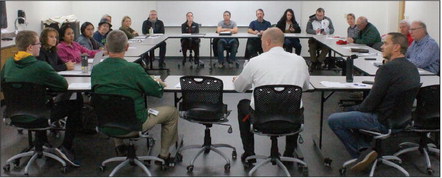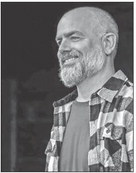Financial analysis sought


One of the first questions that pops up whenever you talk about school consolidation is how will it affect the pocketbooks of those who live in the existing school districts.
That’s why, as one of its first orders of business, the group studying the possible merger of Abbotsford and Colby schools is asking for a financial study to be done by a firm that specializes in school finances.
“The bottom line for a lot of people is going to be that dollar sign,” said group member Don Medenwaldt, former Abbotsford School Board president. “If it doesn’t look like it’s going to save money or be more efficient, a lot of people are going to say ‘Then, why are we doing it?’” At its very first meeting last Thursday, the 22-member group asked superintendents Steve Kolden of Colby and Ryan Bargender of Abbotsford to request $8,000 from each of their school boards to hire Baird, Inc. for a longterm financial study of a consolidated school district.
Baird, which already provides separate financial projections for Colby and Abbotsford, has generated similar information for other successful consolidations, including Chetek-Weyerhauser and Holy Hill in Richfield.
Kolden said Baird will take financial information from the two districts, combine the numbers, and present a projection for what a consolidated school district would look like, including a mil rate, property tax levy and state aid package.
The group had the option of a one-year study, which would cost $3,000 from each of the districts, and a longterm study, which requires $8,000 from each district.
The one-year study would project the financial numbers for one school year, while the longterm analysis would consider the financial implications of consolidation over several years.
Several members of the group said the community is going to want to know what the longterm effects of consolidation are going to be, not just a oneyear snapshot.
Bargender said it will likely take Baird eight to 10 weeks to complete a longterm financial study.
Kolden said Baird will primarily look at revenues, such as state aid and property taxes, when developing its projections.
“Expenses are too hard to predict,” he said.
Medenwaldt also cautioned against putting too much stock in projections beyond three years, since it’s hard to predict what could happen with enrollment, especially if a large employer were to close.
Kolden shared a story from his time in the Menomonie School District, which had UWMadison do a longterm enrollment projection that turned out to be wrong.
“Based on those projections, they closed an elementary school,” he said. “Three years later, they were building, which really didn’t sit well with the community.”
Besides financial impacts, the group also discussed the possible effect of consolidation on staffing levels.
Bargender suggested looking at staffing levels in other districts such as Meford and Mosinee, which have a similar student population to a combined Abby-Colby district.
Kolden said the group could also start by comparing numbers of students and teachers in each district. With both districts filled to the brim with students, he does not believe layoffs are likely.
“My gut tells me we’re not going to be cutting staff,” Kolden said. “With the number of kids we have and the number of staff that are already in place, I don’t see that happening.”
Cheryl Ploeckelman, one of two Colby School Board members in the group, said one priority should be to keep studentto- teacher ratios as small as possible.
One of the main benefits of combining staff is that teachers will be able to specialize in specifi c classes, which should allow for expanded course offerings at the secondary level, Kolden said.
Colby teacher Steve Wozniak said the group needs to consider whether the consolidated district would have just one combined high school or keep two, just as they have in Wausau and Eau Claire.
“I think those are two very different scenarios, and I think both of them should be considered,” he said. Abbotsford parent Dawn Esselman wondered if a consolidated school district could get by without building new facilities, since both districts are “maxed out on space.”
“How are we going to save money if we don’t have space for all our of children?” she said.
Kolden said the possibility of building new elementary facilities may have to be part of the conversation, as well as retrofitting existing high school space into elementary classes.
Colby School Board member Todd Schmidt said the group should really be looking at “what’s best for the students,” but he also sees the potential for eliminating duplications and bringing together the best of both existing districts.
“I see us having two identities that would continue, but that would be managed more effi ciently,” he said. “In a $23 million budget, if we can’t save 10 percent, I think the whole thing is really not worth doing.”
The goal of the consolidation study group is to report its findings to the two school boards in May of 2022, with the possibility of having an advisory referendum on the November 2022 ballot.
Kolden said it will ultimately be up to each school board to decide whether to consolidate.
“Nothing’s a done deal,” he said. “It’s our job to figure out what the community wants and come up with answers.”
Even if voters and the school boards were to authorize a consolidation, Kolden said it would still take awhile for the two districts to become one. “It take multiple years, lots of community conversation and there’s going to be some tough questions,” he said.
Wozniak said the question of whether to consolidate or not will come down to personal feelings amongparentsaboutwhere their students go to school.
“This is going to be a very emotional process for some people,” he said. “They’re very tied to their school and community, and changing where they play football on Friday night probably could be a deal-breaker.”




